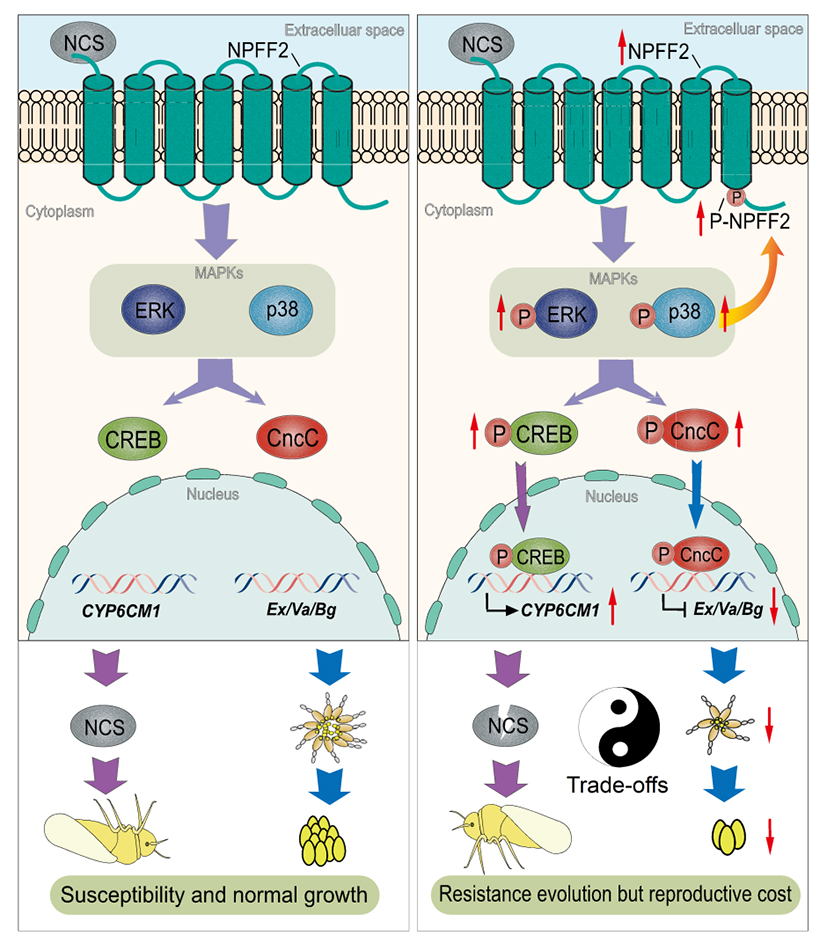Nature selection not only favors the evolution of ever greater benefits but also comes with costly side effects on fitness, resulting in rapid evolutionary trade-offs. Despite the widespread existence of evolutionary gain and loss in many organisms, our understanding of their mechanistic basis remains poor. While many studies have identified specific fitness costs phenotype associated with insecticide resistance, a classic case of rapid adaptive evolution, the molecular mechanisms underlying such fitness trade-offs have never been elucidated.

Recently, one of the world’s most famous scientific journal PNAS has published an interesting work by Pro. Youjun Zhang’s group. This work shed new lights on the pleiotropic role of GPCR-MAPK signaling cascades in evolutionary trade-offs associated with neonicotinoids resistance in the global pest whitefly. Results of this work have resolved in fine detail the knowledge gap about how the fitness trade-offs operates, as this has puzzled entomologists for many decades.

Specifically, the authors discover that GPCR triggered MAPK signaling cascades trans -regulates a key P450 gene CYP6CM1 by activating a transcription factor CREB, contributing to insecticide resistance. However, this same signaling pathway also negatively modulates three key oogenesis genes Ex, Va, and Bg via recruiting another TF CncC, which leads to reproductive cost. They further find a positive feedback loop between the MAPK p38 and GPCR NPFF2 that continuously activates the MAPK pathways, thereby promoting resistance evolution but with a strong reproductive cost in the whitefly.

PNAS managing editor Fred Gould, a member of the United States National Academy of Sciences, think that this work break new ground in insecticide resistance. All three reviewers were impressed by the results, which are also important to researchers in a number of disciplines.
Postdocs Buli Fu ,Jinjin Liang and Du Tianhua, PhD students Hu Jinyu and Tan Qimei are the co-first authors, and Pro. Youjun Zhang and Xin Yang are the corresponding authors of this article. This research was supported by the National Natural Science Foundation of China, Beijing Natural Science Foundation, China Agriculture Research System and the the Science and Technology Innovation Project of the Chinese Academy of Agricultural Sciences.
Link to this paper: https://www.pnas.org/doi/10.1073/pnas.2402407121
By Xin Yang(yangxin@caas.cn)